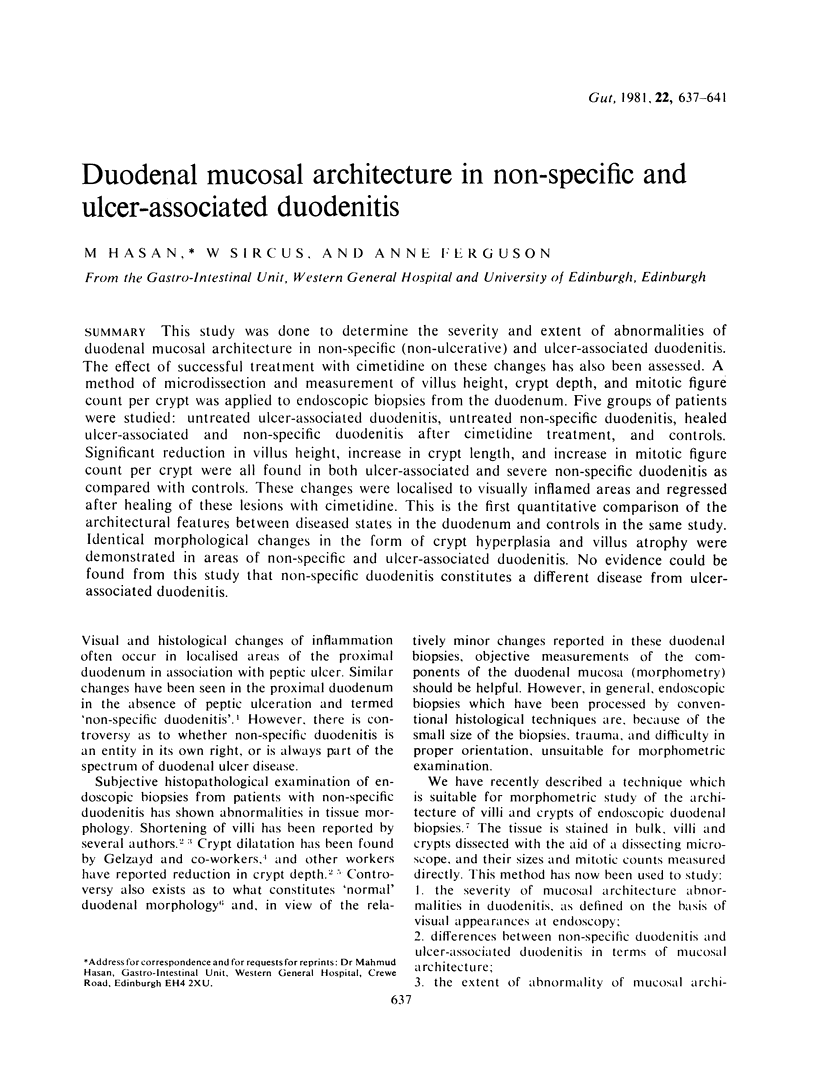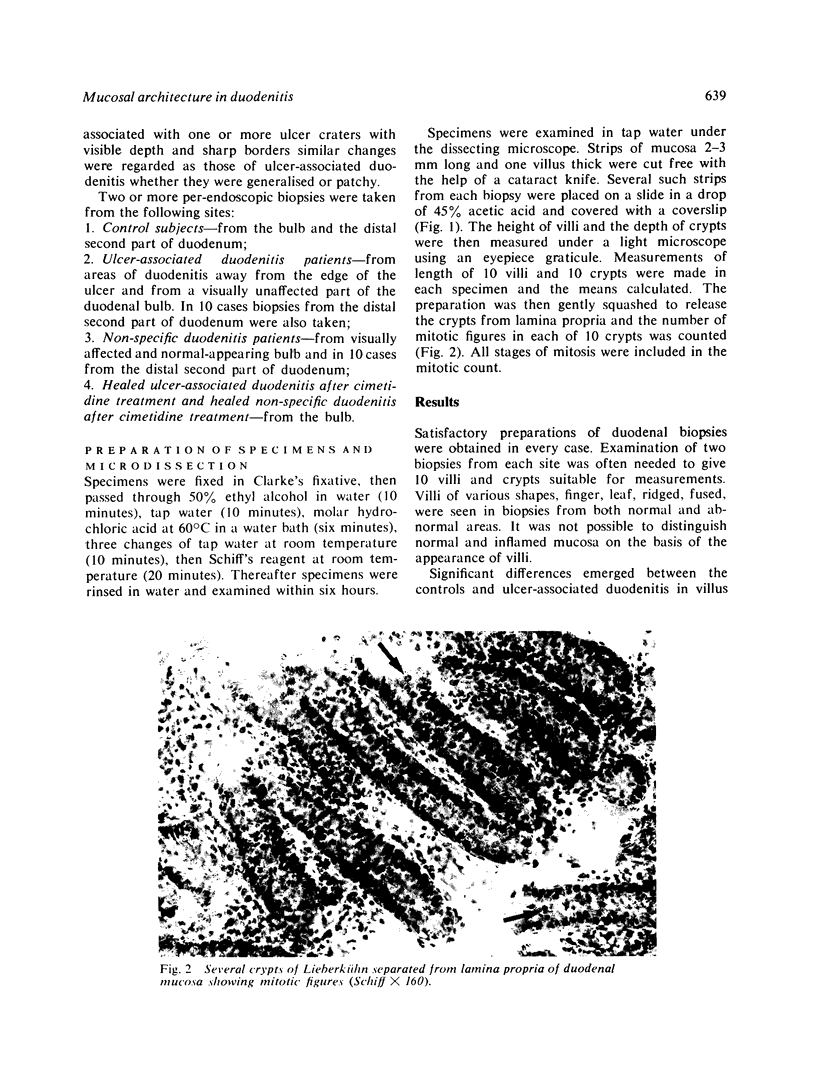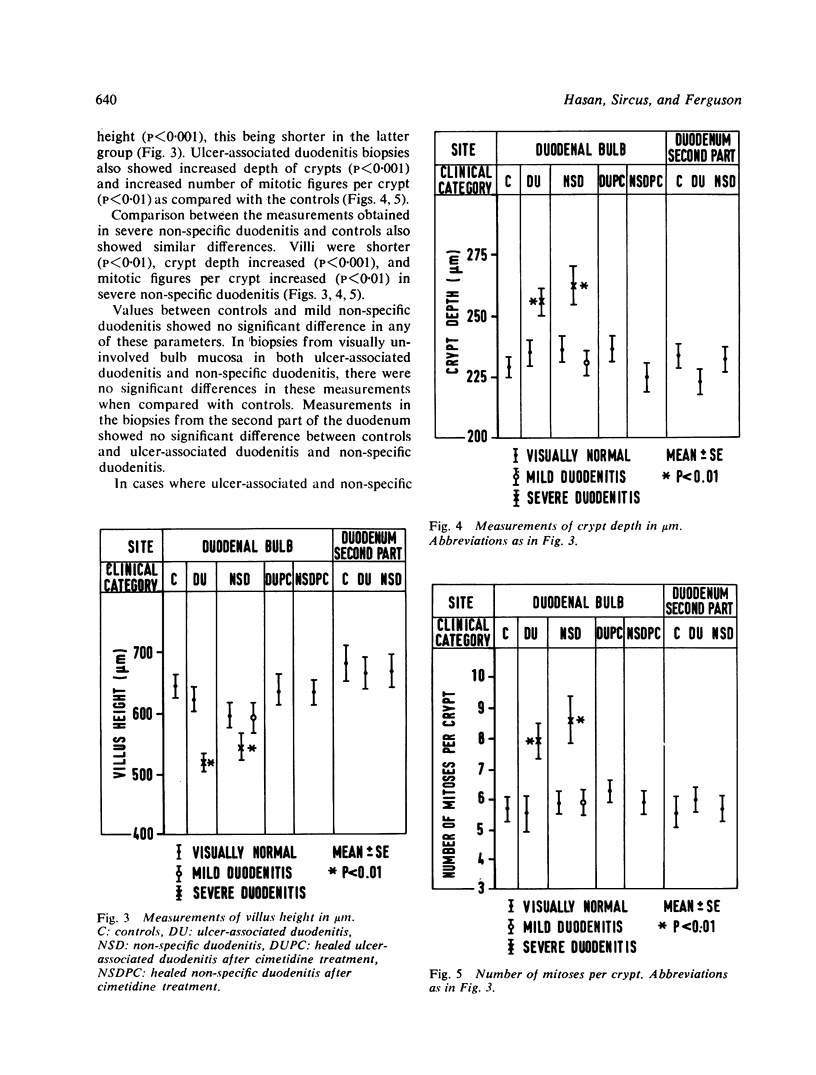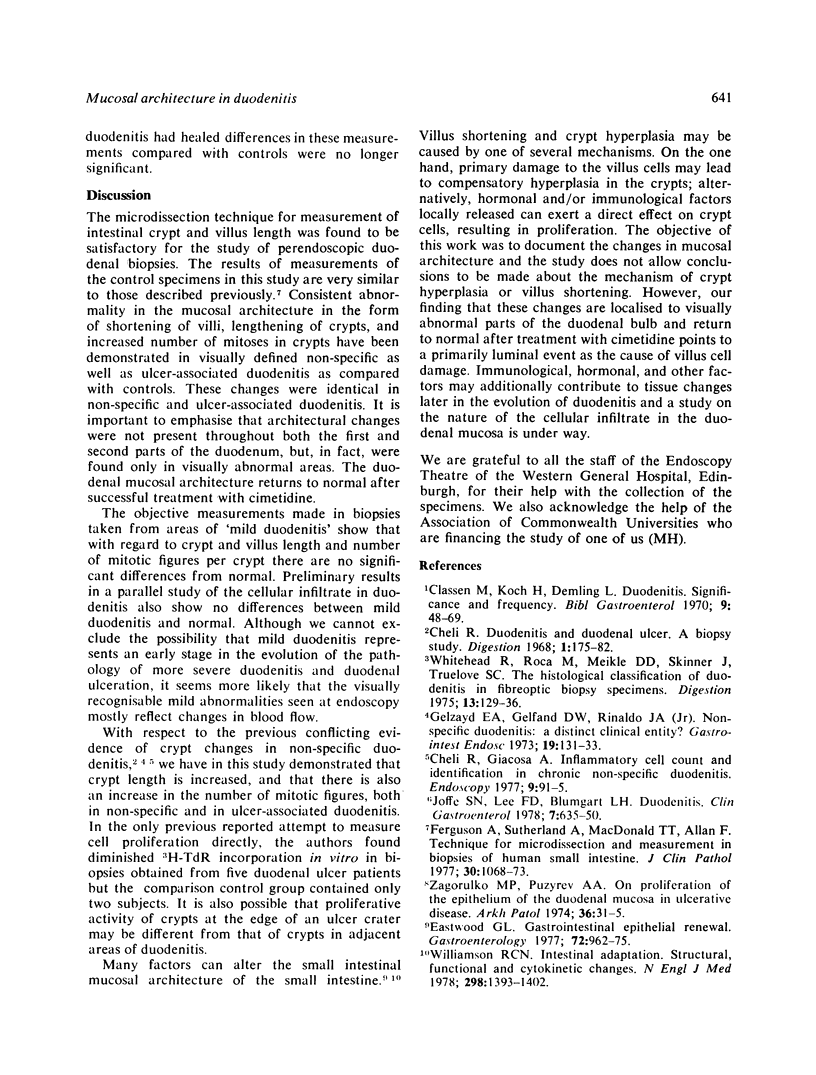Abstract
This study was done to determine the severity and extent of abnormalities of duodenal mucosal architecture in non-specific (non-ulcerative) and ulcer-associated duodenitis. The effect of successful treatment with cimetidine on these changes has also been assessed. A method of microdissection and measurement of villus height, crypt depth, and mitotic figure count per crypt was applied to endoscopic biopsies from the duodenum. Five groups of patients were studied: untreated ulcer-associated duodenitis, untreated non-specific duodenitis, healed ulcer-associated and non-specific duodenitis after cimetidine treatment, and controls. Significant reduction in villus height, increase in crypt length, and increase in mitotic figure count per crypt were all found in both ulcer-associated and severe non-specific duodenitis as compared with controls. These changes were localised to visually inflamed areas and regressed after healing of these lesions with cimetidine. This is the first quantitative comparison of the architectural features between diseased states in the duodenum and control in the same study. Identical morphological changes in the form of crypt hyperplasia and villus atrophy were demonstrated in areas of non-specific and ulcer-associated duodenitis. No evidence could be found from this study that non-specific duodenitis constitutes a different disease from ulcer-associated duodenitis.
Full text
PDF




Images in this article
Selected References
These references are in PubMed. This may not be the complete list of references from this article.
- Cheli R. Duodenitis and duodenal ulcer. A biopsy study. Digestion. 1968;1(3):175–182. doi: 10.1159/000196850. [DOI] [PubMed] [Google Scholar]
- Classen M., Koch H., Demling L. Duodenitis. Significance and frequency. Bibl Gastroenterol. 1970;(9):48–69. [PubMed] [Google Scholar]
- Eastwood G. L. Gastrointestinal epithelial renewal. Gastroenterology. 1977 May;72(5 Pt 1):962–975. [PubMed] [Google Scholar]
- Ferguson A., Sutherland A., MacDonald T. T., Allan F. Technique for microdissection and measurement in biopsies of human small intestine. J Clin Pathol. 1977 Nov;30(11):1068–1073. doi: 10.1136/jcp.30.11.1068. [DOI] [PMC free article] [PubMed] [Google Scholar]
- Gelzayd E. A., Gelfand D. W., Rinaldo J. A., Jr Nonspecific duodenitis: a distinct clinical entity? Gastrointest Endosc. 1973 Feb;19(3):131–133. doi: 10.1016/s0016-5107(73)73980-8. [DOI] [PubMed] [Google Scholar]
- Joffe S. N., Lee F. D., Blumgart L. H. Duodenitis. Clin Gastroenterol. 1978 Sep;7(3):635–650. [PubMed] [Google Scholar]
- Whitehead R., Roca M., Meikle D. D., Skinner J., Truelove S. C. The histological classification of duodenitis in fibreoptic biopsy specimens. Digestion. 1975;13(3):129–136. doi: 10.1159/000197701. [DOI] [PubMed] [Google Scholar]
- Williamson R. C. Intestinal adaptation (first of two parts). Structural, functional and cytokinetic changes. N Engl J Med. 1978 Jun 22;298(25):1393–1402. doi: 10.1056/NEJM197806222982505. [DOI] [PubMed] [Google Scholar]




